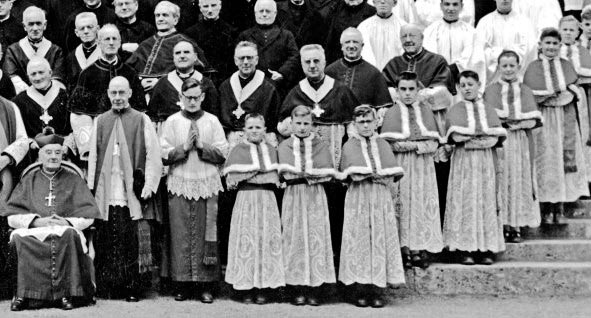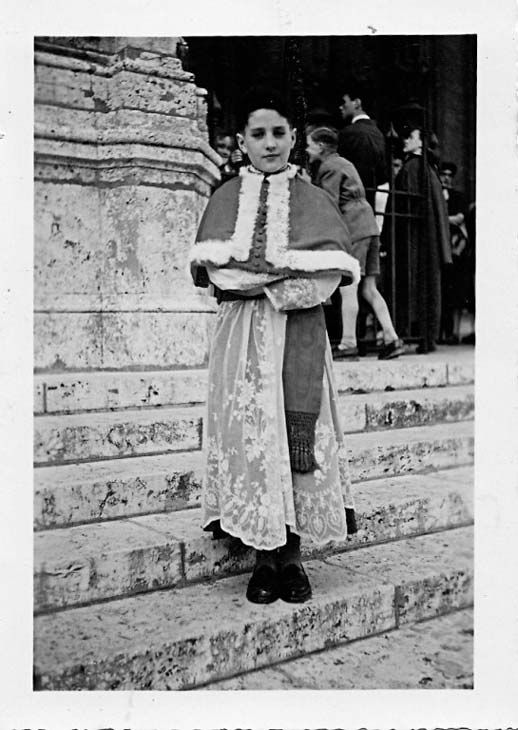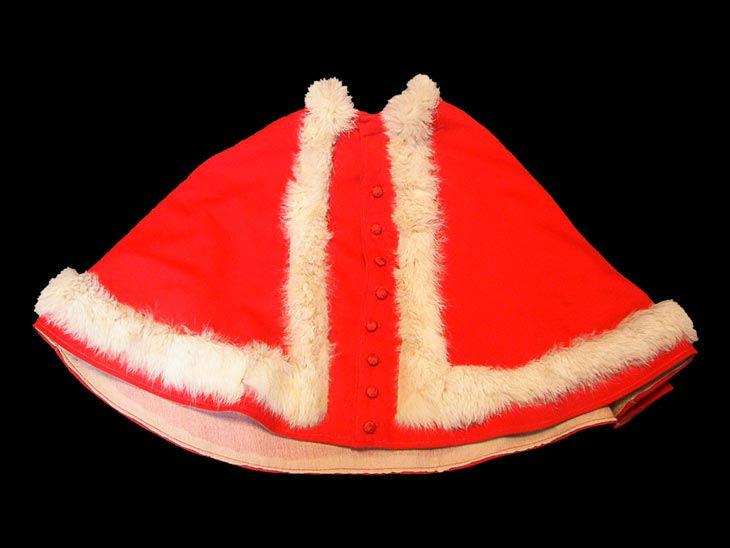The choristers of the cathedral, it seems, once wore a very remarkable outfit—up until the 1950s. What made it so unique? Do any examples still exist?
Indeed, the young choristers, those belonging to the “clerks’ work” (œuvre des clercs), had a distinctive attire that made them recognizable to the townsfolk of Chartres, who were deeply attached to this institution, to people from other dioceses (many of which also had renowned choirs), and even to foreigners. It is known that in the 19th century, the fame of certain exceptional voices extended beyond national borders.
This red garment is mentioned in several literary works, including La Cathédrale by Huysmans and a letter by Proust. The children were particularly attached to it. Today, it is hard to imagine the esprit de corps that prevailed in the choir at the time: prayers were said in honor of the professors from the first generation, and the memoirs of priests who emerged from its ranks were published.
The choristers would don this attire in the old chapter hall on the ground floor of the Saint Piat Chapel and process in two directions: to Notre-Dame de Sous-Terre via the southern entrance to the crypt, and to the cathedral choir via a staircase leading to the axial chapel. Later, the “vestiaire” was moved to the baptistry.
The older choristers wore black cassocks and surplices, like most clerics before the Second Vatican Council.
For the younger ones, the attire consisted of a red cassock, a white lace surplice, a very wide sash (in red satin or perhaps brocaded taffeta), a red mozzetta trimmed with real ermine, a red skullcap, and—for service in the cathedral—red slippers with a soft, felt-like touch.
This attire for the young choristers, at least the mozzetta and sash, was a gift from Empress Eugénie, wife of Napoleon III, financed with her personal funds. It can be dated to around 1860–62. The cathedral’s rectorate still holds about fifty mozzettas, in fairly good condition.
We owe much of this information to Nelly Nouvellon, a guide from the Welcome and Tours service who recently passed away. Her husband had been an integral part of the choir and often performed as a soloist. Thus, we fondly remember our friend Nelly and hold François in our thoughts.



